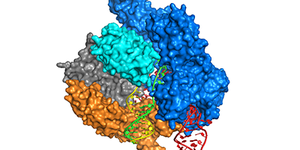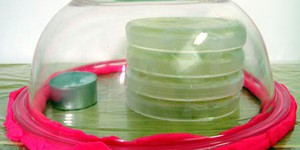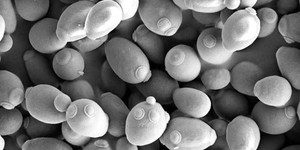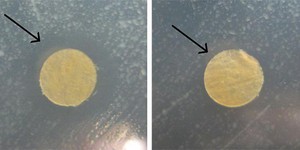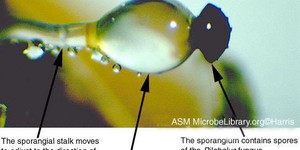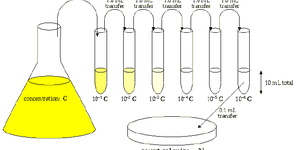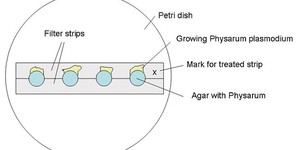Others Like “Worm Hunt: Isolating Soil Nematodes from Your Backyard” (top 20 results)
|
Many scientists are currently very excited about CRISPR, as it has the potential to revolutionize gene editing. But what exactly is CRISPR and what does it do? CRISPR is a novel tool in gene editing that allows the modification of genetic DNA at specific target sites in many different organisms. Researchers have high hopes that this technology can, one day, cure genetic diseases, as mutated DNA sequences can easily be corrected. In this project, you will use CRISPR to mutate a DNA sequence…
Read more
This project uses liquid cultures and agar plates to investigate the effects of different concentrations of a food preservative on microbial growth.
Read more
Have you ever noticed that most yogurt containers say they contain "live cultures"? What does that mean? The label is suggesting that the yogurt has living bacteria in it! While some types of bacteria can make you sick, some are actually important to keep you healthy. But individual bacteria are so tiny that you cannot see one with the naked eye, so how can you tell if bacteria are really living in your yogurt? In this science fair project, you will investigate whether yogurt actually…
Read more
Can you imagine a glowing loaf of bread? You might not be able to make the whole loaf glow, but you can get baker's yeast to fluoresce! The way to do this is to modify the genetic information of the yeast organism. The technology that is used to do this is called genetic engineering. With genetic engineering, you can insert a fluorescent protein gene from a jellyfish into yeast cells, so they start glowing under blue light! Do this project to see for yourself!
Read more
If you'd rate yourself high on the bacteriophobia scale, just keep on scrolling down to the next project. Bacteria are all around us, and normally our body's defenses keep us blissfully unaware of them. If you don't mind finding out where they're lurking in your house, then you might find this project interesting.
Read more
Have you ever heard that nanoparticles can kill bacteria? You may have even seen some consumer products advertise that they contain antibacterial nanoparticles. A nanometer is one billionth of a meter long. Nanoparticles are usually just a few nanometers in diameter — really, really tiny! So how can something that small kill bacteria which are approximately 700 - 1400 nanometers across? Are they really effective? In this science project you will grow some E. coli bacteria and…
Read more
Have you ever thought about how fortunate you are to have safe and clean water coming out of your faucet? Many people in undeveloped nations don't have this luxury. But does that mean they can't have clean water at all? Is there an inexpensive way they could use to make their own clean water? In this microbiology science fair project, you will investigate whether or not sunlight can disinfect contaminated water.
Read more
The Pilobolus fungus has an interesting way of making sure the next generation has a good start on life. At high speed, the fungus shoots a sac that contains spores toward a light source. Why toward a light source? Because that is where it is most likely to find an open area with grass. Once the spore is placed on grass, it is eaten by a cow or a horse, which is a critical step in its life cycle. The spore passes through the animal's digestive track and ends up in a pile of manure. For a fungal…
Read more
How does your family thaw and cook meat? Have you ever wondered if it is the safest way? In this practical science project, you can find out and shed light on safe practices in the kitchen by investigating how many viable bacteria are present in samples of meat that have been thawed or cooked using different methods.
Read more
In this biology science fair project, you will observe how the Physarum polycephalum (P. polycephalum) organism responds to various amounts of glucose. P. polycephalum is easy to grow in a petri dish and responds in complex ways to its environment. Will it grow toward the chemical as it looks for a meal, or will it flee, trying to avoid further contact? Try this science fair project to learn more about chemotaxis in the fascinating Physarum polycephalum.
Read more
|
Explore Our Science Videos
How can air pressure prevent leaks?
Build A River Model – STEM Activity
DIY Mini Drone Part 5: Analog Joystick Control

